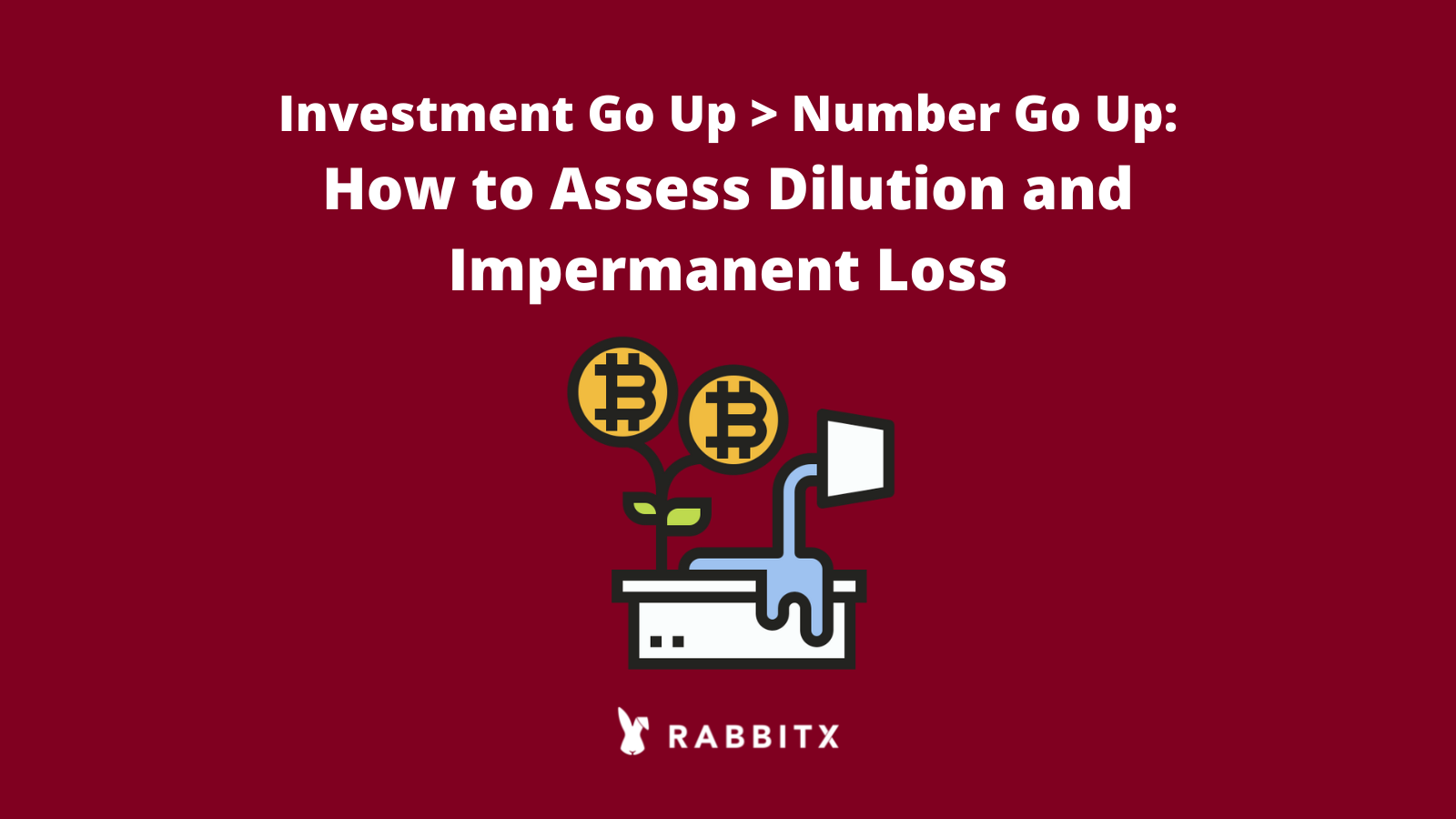In crypto, when we judge how an investment is performing we tend to just look at spot price. Down = bad, up = good.
When we judge whether or not we should LP into something, we tend to think in terms of “impermanent loss”.
If you are holding a token and using it in any way to generate income — staking, yield farming, etc. — you need to focus on total return.
We want investment to go up, that doesn’t necessarily mean number go up.
Usually if you’re staking in a protocol, especially an early-stage one, the protocol is bootstrapping itself and a large part of your staking return is yield in the form of the token you’re staking in. Rabbit's V1, Strips Finance, did this with STRP emission for STRP LP stakers.
This is tantamount to what equity raises are in TradFi. Companies sell parts of themselves to investors, diluting existing stakeholders who are okay with this dilution if the value of their shares grows disproportionately to the dilution.
VCs are okay with losing percent share in a company so long as the total investment increases in value. They’re okay with their 5% share valued at $100M being diluted to 4% if that 4% now has a market value of $120M.
You can think of LP'ing in these terms, except inverted.
Stakers should be viewing success in total dollar terms, and keeping tabs on their position retaining the same percent ownership of market cap as more tokens are emitted.
For example: say I have 12k tokens of XYZ at $10/token and this represents .1% of the market cap ($120k position). I’m staking those tokens in the app emitting XYZ and earning 100% APR, paid out in XYZ token. In this example, stakers are not diluted on the size of their staked position from these emissions.
Say in a month, the spot price of XYZ is now $9.30. Number go down! However during that time I’ve gained another 1k tokens. So now I have 13k XYZ tokens at $9.30; that means I have $120,900 investment in XYZ and still have a .1% position in the protocol. Investment go up!
The same mentality should be applied towards yield farming with LP, the APY, and the impermanent loss concept.
If you’re yield farming with token A and token B at a starting price of $10 and a 100% APY, and token A goes to $15 and B stays at $10, you just incurred 2% in impermanent loss, costing you about $50 (you would have had $50 more had you just held token A).
However, you were LP’ing in a yield farm that had a 100% APY and have been farming with this LP for a month. That means you made $204 in yield during this time (8.33%).

This means that you actually made $153 more than simply holding token A when we view the investment holistically and net out the yield earned in conjunction with any impermanent loss. This is the correct way to assess the profitability of yield farming; the yield must be factored in conjunction with any impermanent loss calculation.
Follow at @BackTheBunny
Check out another one of our popular posts --> In a Multichain Future, Will You Know What Chain You’re Using?



Comments are closed!